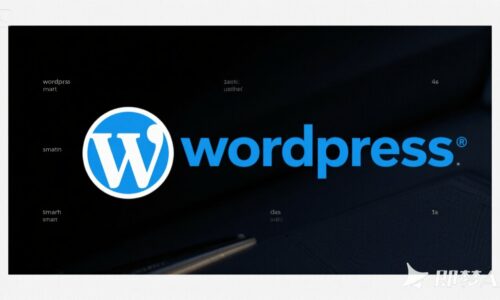
Step-by-Step Guide: How to Create a Stunning Website for Your Business in 2025
- IvanTan
- May 19, 2025
- How To
- how do i make website for my business
- 0 Comments
In today’s digital landscape, having a stunning website is no longer just an option—it’s a necessity for business success in 2025. Whether you’re starting from scratch or looking to revamp an existing site, the journey to creating a captivating online presence can be daunting. But fear not! This step-by-step guide is designed to simplify the process, breaking it down into manageable tasks that even beginners can tackle with confidence. From selecting the perfect domain and hosting provider to designing user-friendly layouts and optimizing for mobile devices, each step is crucial. You’ll discover essential tips on showcasing your brand’s unique identity while ensuring your website stands out in a crowded marketplace. Ready to elevate your business with a website that not only looks stunning but also drives conversions? Let’s dive in and turn your vision into a vibrant reality!
Importance of a Strong Online Presence in2025
In the digital era of 2025, having a strong online presence is indispensable for any business aiming for success. The internet has become an integral part of consumers’ daily lives, influencing how they discover, engage with, and purchase from businesses. If your business does not have a well-crafted website, you risk losing potential customers to competitors who do. A compelling online presence not only establishes credibility but also extends your reach to a global audience, breaking geographical barriers that once limited business growth.
Moreover, a robust online presence offers numerous benefits beyond just attracting customers. It enhances brand visibility, allowing businesses to showcase their products or services effectively. A strategically designed website can also serve as a platform for customer engagement, offering valuable insights into consumer behavior and preferences. This data can be leveraged to tailor marketing strategies, improve customer experiences, and ultimately drive higher conversions and sales.
In today’s competitive marketplace, where every business is vying for attention, differentiating yourself through a stunning website is crucial. Your website acts as the digital face of your brand, reflecting your business values, mission, and professionalism. A well-designed website can convey trust and reliability, encouraging visitors to explore further and potentially become loyal customers. Therefore, investing time and resources into creating a captivating online presence is not just an option but a business imperative in 2025.
Key Elements of a Stunning Website
Creating a stunning website involves more than just aesthetic appeal; it requires a harmonious blend of various elements that work together to provide an exceptional user experience. One of the foundational aspects is a clean and intuitive layout. Visitors should be able to navigate your site effortlessly, finding the information they need without confusion. This means having a well-structured menu, logical page hierarchy, and clear call-to-action buttons that guide users through their journey on your site.
Another critical element is high-quality content. Content is king in the digital world, and what you present on your website significantly impacts its effectiveness. This includes everything from compelling copy and engaging blog posts to high-resolution images and videos. The content should not only be informative and relevant but also reflect your brand’s voice and personality. It’s essential to keep your audience in mind, crafting content that resonates with their needs and interests.
Lastly, the performance of your website is paramount. In 2025, users expect fast-loading pages and seamless functionality, regardless of the device they are using. This means optimizing your site for speed and ensuring it is mobile-friendly. A responsive design that adapts to different screen sizes will enhance the user experience and prevent potential customers from bouncing off your site due to slow load times or poor usability. By focusing on these key elements, you can create a website that is not only visually appealing but also highly functional and user-centric.
Planning Your Website: Defining Goals and Target Audience
Before diving into the technical aspects of building your website, it’s essential to start with a clear plan. This involves defining your goals and understanding your target audience. Your website’s objectives will guide its design, content, and overall functionality. Are you looking to generate leads, sell products, provide information, or build a community? Clearly outlining these goals will ensure that every element of your website aligns with your business objectives.
Identifying your target audience is equally important. Knowing who your potential customers are will help you tailor your website to meet their needs and preferences. Consider factors such as age, gender, location, interests, and online behavior. This demographic information will influence everything from the visual design and tone of your content to the features and functionalities you include. For example, a younger audience may prefer a more dynamic and interactive site, while a professional audience might appreciate a sleek and sophisticated design.
Once you have a clear understanding of your goals and audience, you can start mapping out the structure of your website. Creating a sitemap and wireframes can be incredibly helpful at this stage. A sitemap outlines the hierarchy and navigation of your pages, ensuring that users can easily find what they are looking for. Wireframes provide a visual blueprint of your site, allowing you to plan the layout and placement of key elements before moving on to the design phase. By taking the time to plan thoroughly, you set a solid foundation for a successful website.
Choosing the Right Domain Name and Hosting Provider
Your domain name is your website’s address on the internet, and choosing the right one is crucial for your brand’s identity and online visibility. It should be memorable, easy to spell, and reflective of your business. Ideally, your domain name will include your business name or keywords related to your industry, making it easier for users to find you through search engines. Avoid using numbers, hyphens, or complex spellings that can confuse potential visitors.
Once you have selected a domain name, the next step is to choose a reliable hosting provider. Your hosting provider is responsible for ensuring that your website is accessible to users at all times. There are various types of hosting available, including shared hosting, virtual private servers (VPS), and dedicated hosting. Shared hosting is a cost-effective option for small businesses, but it may not provide the best performance if your site experiences high traffic. VPS and dedicated hosting offer more resources and better performance but come at a higher cost.
When selecting a hosting provider, consider factors such as uptime guarantees, customer support, and scalability. Uptime guarantees ensure that your website remains online and accessible, while responsive customer support can help resolve any technical issues promptly. Scalability is important if you anticipate your website growing in the future, allowing you to upgrade your hosting plan as needed. By choosing the right domain name and hosting provider, you lay the groundwork for a stable and professional online presence.
highly recommence use VtaCLoud hosting for your business website, the website cms tool is already include with the hosting plan, here is the the discount code:
Selecting a Website Builder or Content Management System (CMS)
Choosing the right platform to build your website is a critical decision that will impact its functionality, ease of use, and scalability. Website builders and content management systems (CMS) are the two main options available. Website builders like Wix, Squarespace, and Weebly offer user-friendly drag-and-drop interfaces, making them ideal for beginners with no coding experience. These platforms provide a range of templates and customization options, allowing you to create a professional-looking website quickly.
On the other hand, content management systems like WordPress, Joomla, and Drupal offer more flexibility and control over your website’s design and functionality. WordPress, in particular, is the most popular CMS, powering over 40% of websites on the internet. It offers a vast library of themes and plugins, enabling you to add various features and functionalities to your site. While CMS platforms may have a steeper learning curve compared to website builders, they provide greater customization options and are better suited for larger or more complex websites.
When selecting a website builder or CMS, consider your technical skills, budget, and the specific needs of your website. If you prefer a straightforward and user-friendly solution, a website builder may be the best choice. However, if you require advanced features and have the technical know-how or are willing to hire a developer, a CMS like WordPress can provide the flexibility and scalability you need. By choosing the right platform, you can create a website that meets your business requirements and can grow with you over time.
Designing Your Website: Best Practices for Layout and Aesthetics
Designing your website is where your creativity comes into play, but it’s important to follow best practices to ensure a visually appealing and user-friendly experience. One key principle is simplicity. A clean and uncluttered design helps users focus on your content and navigate your site with ease. Avoid overwhelming visitors with too many elements or excessively flashy graphics. Instead, use whitespace effectively to create a balanced and harmonious layout.
Consistency is another crucial aspect of good design. Your website should have a cohesive look and feel, with consistent use of colors, fonts, and design elements across all pages. This not only enhances the aesthetic appeal but also reinforces your brand identity. Choose a color scheme that aligns with your brand and evokes the desired emotions in your audience. Similarly, select fonts that are easy to read and complement your overall design.
User experience (UX) should be at the forefront of your design process. This involves creating intuitive navigation, ensuring that important information is easily accessible, and optimizing your site for various devices. Use clear and descriptive labels for your menu items, and consider incorporating a search bar to help users find specific content quickly. Additionally, with the increasing use of mobile devices, it’s essential to have a responsive design that adapts seamlessly to different screen sizes. By prioritizing simplicity, consistency, and user experience, you can create a visually stunning website that keeps visitors engaged and encourages them to take action.
Essential Features to Include: From Contact Forms to E-commerce
A stunning website is not just about looks; it also needs to be functional and equipped with essential features that enhance user experience and support your business goals. One of the most important features is a contact form. This allows visitors to easily get in touch with you, whether they have inquiries, feedback, or require support. Make sure your contact form is simple and straightforward, asking for only the necessary information to avoid overwhelming users.
If you plan to sell products or services online, incorporating e-commerce functionality is crucial. This involves setting up an online store with features such as product listings, shopping cart, checkout process, and payment gateways. Ensure that your e-commerce platform is secure, user-friendly, and supports various payment methods. Providing a seamless shopping experience can significantly boost your sales and customer satisfaction.
Other essential features to consider include social media integration, which allows visitors to connect with your brand on different platforms, and a blog section for sharing valuable content and updates. Additionally, incorporating features like live chat, customer reviews, and FAQ sections can enhance user engagement and provide valuable support. By including these essential features, you can create a comprehensive and functional website that caters to the needs of your visitors and drives your business forward.
Testing and Launching Your Website: What to Check Before Going Live
Before launching your website, it’s crucial to conduct thorough testing to ensure that everything functions correctly and provides a seamless user experience. Start by checking the overall design and layout on different devices and browsers to ensure that your site is responsive and looks consistent across all platforms. Test all interactive elements, such as forms, buttons, and links, to ensure they work as intended and guide users to the correct destinations.
Content review is another important step. Proofread all text for spelling and grammatical errors, and ensure that your content is clear, concise, and aligned with your brand’s voice. Verify that all images and videos are properly displayed and optimized for fast loading times. Additionally, check that your contact information, including email addresses and phone numbers, is accurate and up-to-date.
Functionality testing involves checking the performance of essential features, such as the checkout process for e-commerce sites, search functionality, and any third-party integrations like social media feeds or analytics tools. Conducting user testing with a small group of people can provide valuable feedback on the user experience and highlight any potential issues. By thoroughly testing your website before going live, you can ensure a smooth launch and provide a positive experience for your visitors from day one.
Maintaining and Updating Your Website: Best Practices for Longevity
Launching your website is just the beginning; maintaining and updating it regularly is crucial for its longevity and continued success. One of the best practices for maintenance is to perform regular backups of your site. This ensures that you can restore your website quickly in case of any unexpected issues, such as cyberattacks or server failures. Many hosting providers offer automatic backup services, but it’s also a good idea to keep manual backups as an extra precaution.
Keeping your website’s software, themes, and plugins up-to-date is essential for security and performance. Outdated software can expose your site to vulnerabilities and slow down its performance. Regularly check for updates and apply them promptly to keep your website running smoothly and securely. Additionally, monitor your site’s performance using analytics tools to identify any issues, such as slow loading times or broken links, and address them promptly.
Finally, continually updating your content is vital for keeping your website relevant and engaging. Regularly publish new blog posts, update product listings, and refresh any outdated information. Engaging with your audience through new content can drive traffic, improve SEO, and foster customer loyalty. By following these best practices for maintenance and updates, you can ensure that your website remains a valuable asset for your business for years to come.





